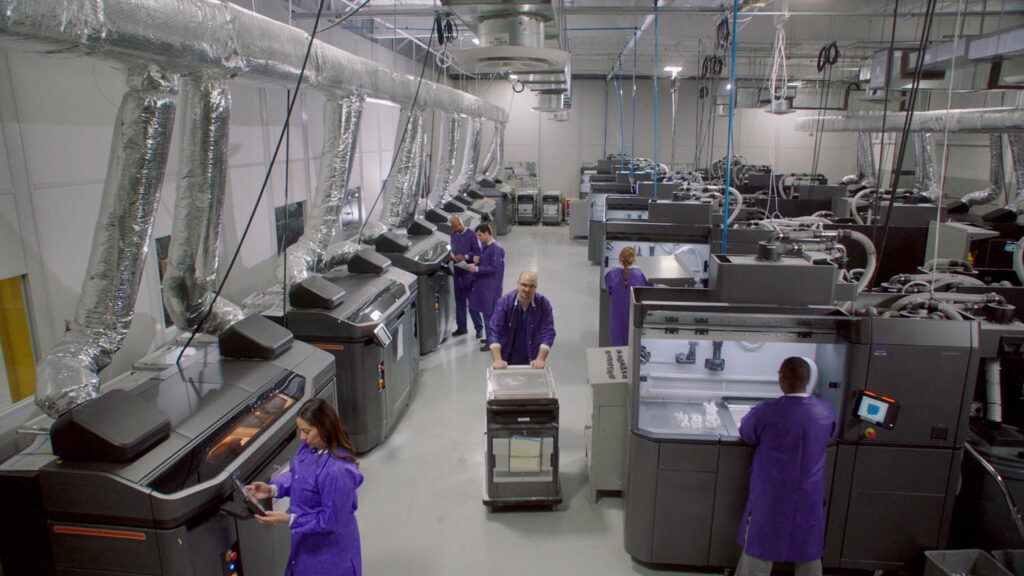Mass customisation was one of the biggest promises made for 3D printing, but as Stephen Holmes writes, lack of demand is forcing more common-sense approaches when it comes to putting this technology to work
Bespoke, limited-run, customised, mass-produced. Each of these descriptors carries an implication of value — not just monetary value, but also what a product will do for you, its buyer.
A bespoke suit from Savile Row is something I’ve long dreamed of owning, especially at those times when I’ve been expected to squeeze my disorganised proportions — short legs, broad shoulders — into formalwear.
Yet skilled craftsmanship like this comes at an eye-watering cost. The logical step down, the next best option, of course, is to have a mass-manufactured product customised. Taking my off-the-peg suits to a tailor certainly makes them fit far better, but it comes with some compromises when compared to a fully bespoke piece of tailoring.
Depending on the product, a ‘limited-run’ item tends to offer a sense of exclusivity, rather than any major gains in functionality. A limited-run car, for example, is usually a standard model with extra colour options, maybe a handful of new trinkets. Bespoke it most certainly isn’t, but it still sits at a level above the norm.
The right fit
Given the cost-performance-quality criteria most of us apply to purchases, where do the products that you design fit?
An element often missing is customisation. Unlike my off-the-peg suit, there is nowhere I can take my generic electrical product in order to have it customised. This is partly because few of us can imagine any reason why we’d want to do such a thing.
Customisation is typically a choice made for aesthetic or dimensional requirements. There is little demand for a company that will clad your toaster in a tartan of your choice, or reduce the size of its outer casing to fit better on your kitchen worktop.
Which circuitously leads me to the topic of 3D printing. Customisation is one of the areas where the technology was famously going to step in, allowing designers and consumers to bridge the gap between the mass-manufactured and the exclusive.
But even products with purely functional, dimensional customisation needs, such as dental aligners, have struggled with 3D printing. As I write this, Smile Direct Club, one of the biggest users of additive manufacturing for creating such products, has just filed for bankruptcy.
Meanwhile, options for visual customisation, such as MINI’s 3D-printed custom panels, to which car buyers could add text or symbols, no longer feature on the options list.
Even much-hyped custom possibilities, such as shoe midsoles mapped to the weight of your step, or bike seats formed to fit your posterior and keep it in ultimate comfort, have not materialised, beyond a handful of expensive examples.
Without a driving need for personalisation for many products, the move towards customisation seems to have stalled
Where next?
Without a driving need for personalisation for many products – in contrast, say, to medical devices – the move towards customisation seems to have stalled, taking with it a fundamental benefit of 3D printing: that every product can differ from the one previously built.
Left without any real ideas for consumer-facing customisation, the 3D printing sector is now turning its attention to two other options: the unique and the mass-produced
The latest high-value, low-volume products all look to utilise 3D printing. They include space-bound rocket engines and micro satellites, as well as earthbound consumer products, such as lightweight bicycle components.
At the other end of the scale is mass production, with turnkey additive solutions for producing complex, detailed parts in the right volume and at the right price.
These are areas growing at a brisk pace, as 3D printing finds a home in manufacturing niches where traditional methods are too awkward, too imprecise, too costly or even totally unworkable.
How this feeds back into more general product design is yet to be seen. But as brands and OEMs become more comfortable with 3D printing, we’re likely to see increased adoption.
And when this long-promised vision finally comes to fruition, then we can expect the value proposition inherent in terms like ‘bespoke’ and ‘mass produced’ to change, perhaps fundamentally. But don’t be expecting to get your hands on a tailored tartan toaster anytime soon.
This article first appeared in DEVELOP3D Magazine
DEVELOP3D is a publication dedicated to product design + development, from concept to manufacture and the technologies behind it all.
To receive the physical publication or digital issue free, as well as exclusive news and offers, subscribe to DEVELOP3D Magazine here






